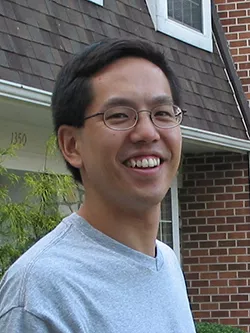Life in the Sea Is Getting Bigger All the Time

Steve C. Wang
Associate Professor of Statistics Steve C. Wang, working with researchers from Stanford University, has shown that the mean size of marine animals has increased 150-fold over the past 542 million years. Contrary to a controversial hypothesis, this increase likely reflects an active evolutionary process rather than random change over time.
Wang designed one of the statistical tests that the Stanford team used to determine whether their fossil database was more compatible with a model of random long-term change known as neutral drift, or a model of active evolutionary selection. His test allowed them to rule out neutral drift.
"In the 1990s, paleontologist Stephen Jay Gould advocated the idea that many of the trends we see in the fossil record were the result of neutral or random drift, rather than active evolutionary processes," Wang explains. "This hypothesis was hotly contested for several years, but the debate eventually faded away because there was a lack of data to decide one way or another. Now we've assembled a comprehensive database — and we found that Gould was wrong, at least for body size."
The study's results, published in the Feb. 20 issue of Science, come from data pertaining to over 17,000 groups of marine animals across five biological phyla. The research is the most thorough test ever conducted of Cope's rule, named for 19th century paleontologist Edward Cope, which stated that terrestrial mammal sizes tend to increase with time. In addition to discerning that Cope's rule is true for marine animals, it also sought to understand what exactly drives these body size increases.
Wang underlines the team's finding that selection for larger body sizes is neither neutral nor coincidental. "Average body size has grown tremendously over the history of animal life, to an extent incompatible with neutral drift," he says. "And this happened not just because smaller groups increased in size, but primarily because larger groups became more diverse."



